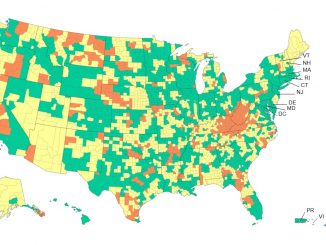Even for the most committed COVID-19 dashboard watchers, the amount of data being generated during the coronavirus pandemic can be daunting. For two years, news of the virus in the U.S. has been told in statistics: 51 million (confirmed infections), 61.7 percent (fully vaccinated), 1.5 million a day (COVID tests administered), 807,393 (total deaths). That last one is the biggie, and with the fast-spreading omicron variant raging (already accounting for 73 percent of new infections in the U.S.), that ticker is bound to roll over to 1,000,000 in 2022. As shocking as the number might be to consider, it’s obvious that—given 39 percent of Americans don’t see COVID-19 as a public health threat and 45 percent of those unvaccinated still refuse to wear a mask in public—the gravity of the death toll has not set in.
It’s not just pandemic fatigue causing the cognitive dissonance. In a very real way, the scale of COVID-19 is overwhelming, and many Americans are experiencing what psychologists call “psychic numbing,” a kind of protective shutdown of feelings that might allow a person to chew out a retail clerk who requests they abide by a mask policy, for example.
What will it take for Americans to better process reality? Locally, can we live up to the example set when we opened our homes to strangers by taking in wildfire refugees and start to cooperate in reducing the spread of a disease that’s killed more Butte County residents in the past three months than were lost in the Camp Fire?
First, we have to remember that there are people behind the statistics. For those who have not lost a loved one to the disease, Alex Goldstein’s FacesOfCOVID Twitter account humanizes the people represented by the numbers. He’s posted the stories of thousands of Americans who died from the disease (submitted to him by their friends and family members), including Veronica Bowers of Chico, who died last Jan. 9: “Vero was a fighter … She loved her husband Jim & Yorkies Bella & Cisco … Vero was a connoisseur of tacos & knew every taco truck in town. She worked for Social Services helping others.” She was 42.
And regarding the magnitude of the death toll, maybe a better way to get it across is to put the numbers in a historical context. Consider “excess deaths” or the number of deaths above normal. According to the U.S. Centers for Disease Control and Prevention, in 2020, the first year of COVID in America, there were roughly 500,000 more deaths than expected—an increased death rate of 15.9 percent from 2019. Other than the 12 percent jump in 1918, the first year of the Spanish Flu, the excess death rate has never increased by double digits in a year. It’s the most drastic jump in more than a century, and with nearly half-a-million more COVID-19 deaths in year two of the pandemic, 2021 will likely be even higher.
Americans could just reset the bar and accept an increase of deaths in hundreds of thousands each year, or we could refocus and open our hearts to strangers by making meaningful sacrifices—masking up, getting vaccinated—for the greater good.




Be the first to comment